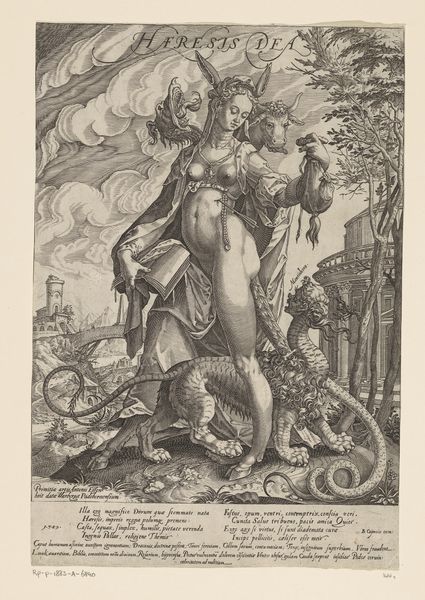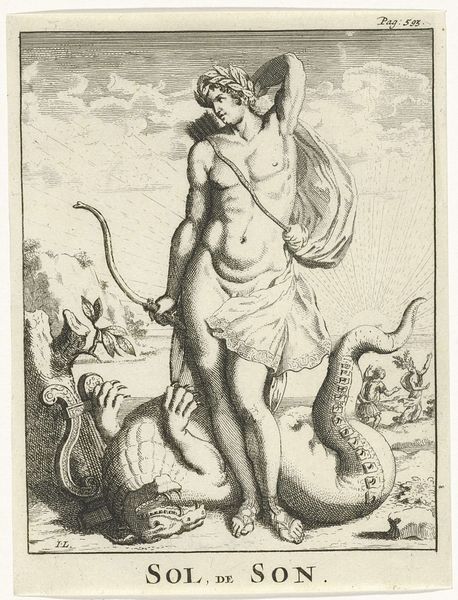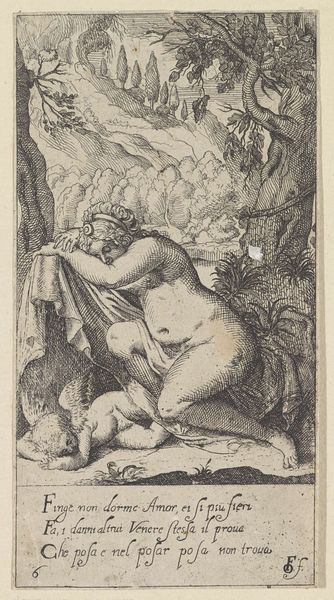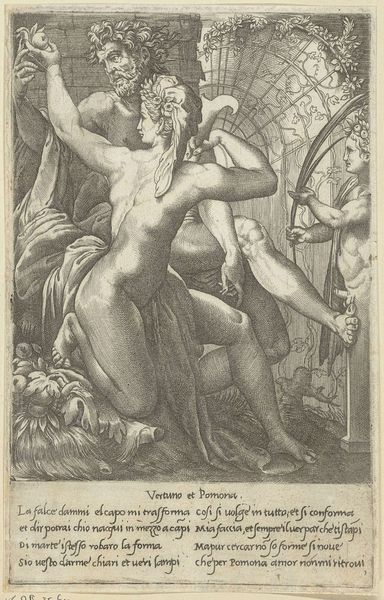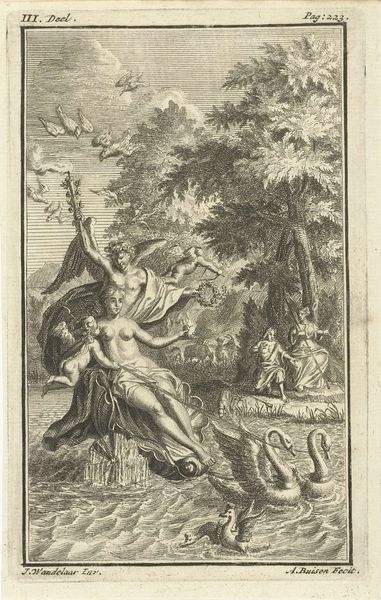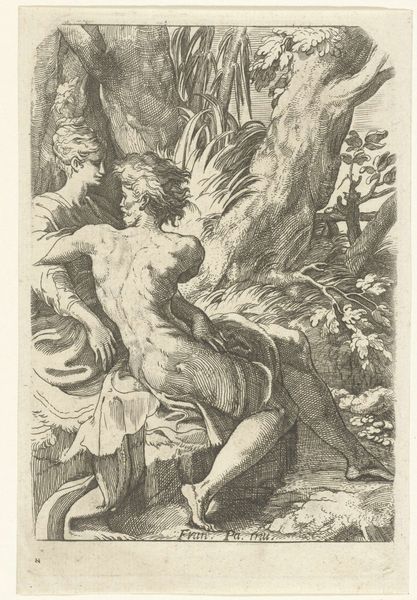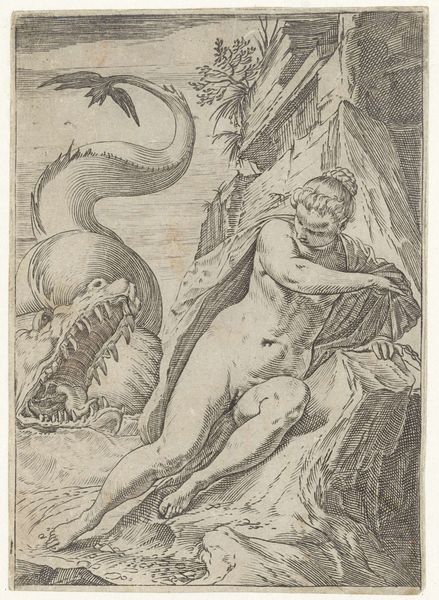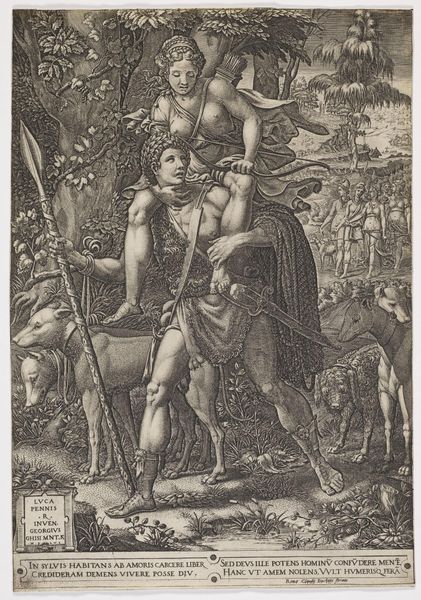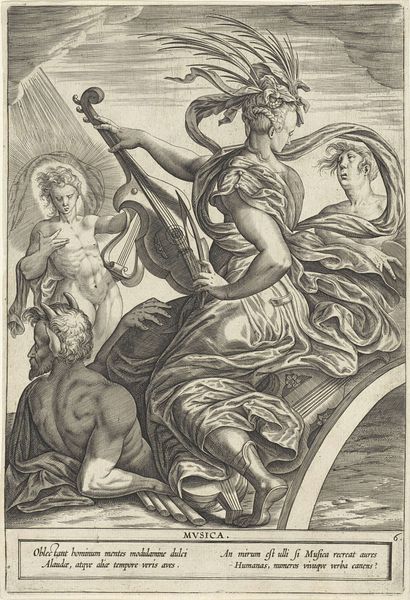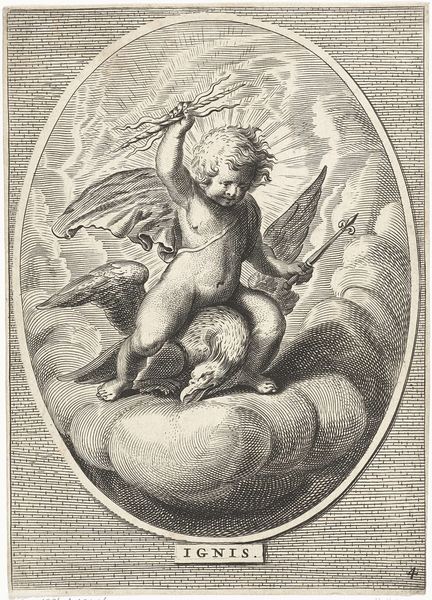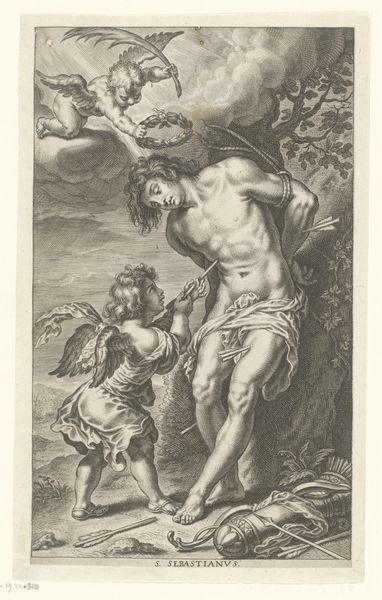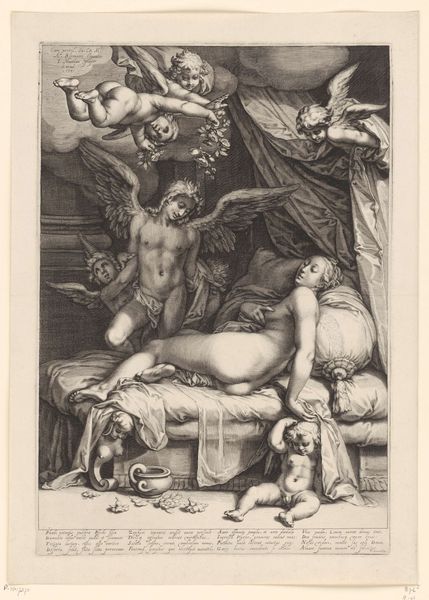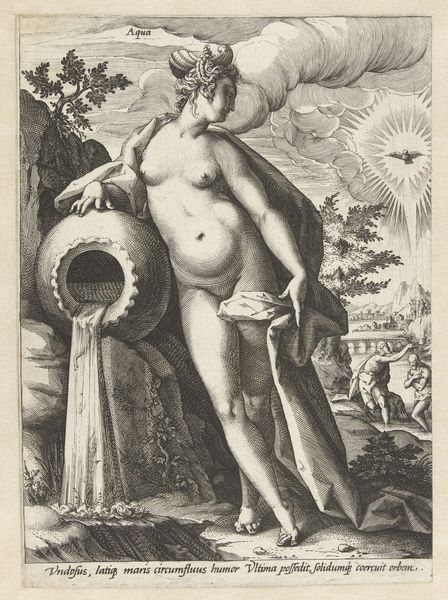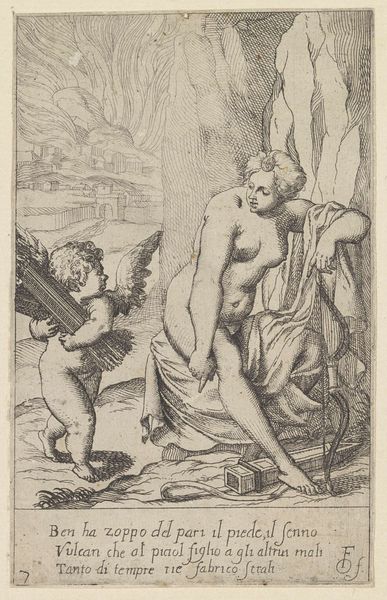
print, engraving
#
allegory
# print
#
old engraving style
#
mannerism
#
figuration
#
portrait drawing
#
northern-renaissance
#
nude
#
engraving
Dimensions: height 216 mm, width 157 mm
Copyright: Rijks Museum: Open Domain
Editor: Here we have Hendrick Goltzius’s “Aarde,” an engraving from 1586. It strikes me as a powerful, almost assertive depiction of abundance, but also vulnerability. The figure, laden with fruit, seems almost burdened. What's your read on this engraving? Curator: The power dynamic between the representation of nature and its impact on the viewer is quite interesting here. Consider the period – this is late 16th century. Europe is emerging from religious conflict, scientific thought is challenging dogma, and art becomes a tool for projecting ideals of nationhood, wealth and control. "Aarde," meaning "Earth", aligns with that sociopolitical context. The cornucopia and the fecund landscape promote an idea of Earth’s capacity to fulfill human needs but the "burden" can also be understood as an argument for mankind´s responsibility for it. Editor: I see what you mean. It's not just about the bounty; it’s about control and responsibility at a time of immense social upheaval. The prominent nudity and classically inspired form contribute too, right? It reminds me of how rulers would commission portraits linking them to idealized historical figures. Curator: Exactly! Think of the institutions of art patronange during this period: Powerful families, nascent nation-states... The image presents a vision of terrestrial control to suggest earthly power. The public function of the arts shifted: The human body—idealized—stood for much more than religious morality or fidelity; it became intertwined with aspirations of terrestrial dominion. So how does the artist make us, the viewer, relate to "Aarde" politically? Editor: That's a shift in perspective I hadn't fully appreciated. Looking at it now, it does seem less a celebration of nature itself, and more a claim to ownership. Curator: Precisely. It showcases art’s inherent public role—consciously or not. And also prompts us to question: Who is represented? Who is empowered by this representation? Editor: Fascinating! It's made me see beyond the surface beauty of the engraving and understand the power structures it subtly reinforces. Thanks for this fresh approach.
Comments
No comments
Be the first to comment and join the conversation on the ultimate creative platform.
